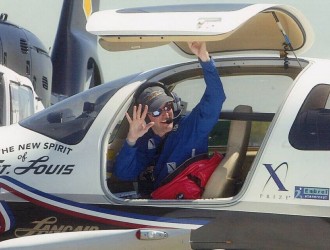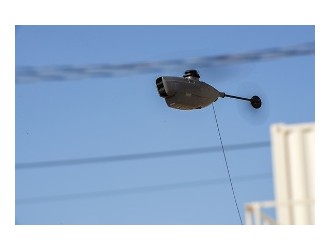I remember flying into an unfamiliar airport once and the pilots on frequency chiding me for not knowing the name of their airfield. Didn’t make sense to me.
I made each callout using the FAA-charted name. When I wondered aloud what the deal was, the FBO manager told me: “That’s not our local procedure.”
Ignorance of local procedure almost led to a midair collision for one multiengine pilot, as he described in his report to NASA’s Aviation Safety Reporting System: “While I was entering the area of Branch County Memorial Airport (KOEB) from the east, I was calling out my position on common traffic advisory frequency (CTAF) 122.70. I entered the traffic pattern with the standard 45° entry on downwind for Runway 7.”
The pilot heard other pilots making position reports for “Coldwater traffic” but ignored them, as he knew 122.70 was a frequency used by several airports in that geographic area.
“As I was approaching the 45 and getting ready to turn left base, I saw a Piper at my 8 o’clock making a left turn also toward Branch County airport. I took evasive action and called out the traffic conflict. The pilot rudely informed me he was calling out his position for Coldwater airport.”

On the ground, the reporting pilot announced on the CTAF that the Airport/Facility Directory calls the airport Branch County and not Coldwater.
He wrote that the close call happened because the local pilots were using a name only a local would know.
“I was told on the air that it is called both, except they continued using the non-standard name,” he said.
The Airport/Facility Directory (officially renamed U.S. Chart Supplements as of March 31, 2016) is an FAA-issued reference book designed to aid pilots traveling to unfamiliar airports. The seven regional manuals comprising it list public-use airports, seaplane bases, heliports, military facilities and certain private-use airports requested by the Department of Defense.
The directories include hours of operation and telephone numbers for airports, air traffic control facilities and weather services.
What they don’t contain is the tribal knowledge more commonly known as “local procedure” that only pilots based at or familiar with a given airport know.
Of 348 reports in the ASRS database labeled “near miss,” “close call” or “runway incursion,” 19 pilots blamed their incident on unfamiliarity with “local procedures.”
Ignorance of some local procedures will get you a rude remark on the radio — or the consequences could be more significant.
A corporate jet captain wrote in his NASA report about his conflict with ATC that could have resulted in him losing his license. The incident involved a local procedure ATC decided to use for pilots flying in New York airspace.
“After being vectored off of the JAIKE arrival to KTEB, ATC issued a descent below the floor of the Class B (assigned 2,000 feet in the vicinity of the VANER intersection) and instructed us to maintain a speed of 210 knots. I informed them that we would be below the shelf of the Class B and would be maintaining 200 knots.”
Why 200 knots? Because that is the FAA-mandated maximum airspeed below the shelf of Class B airspace. Why is that? A Class B shelf exists to accommodate typically slower, smaller traffic from satellite airports in the vicinity of much busier, major metropolitan Class B airports. The lower speed limit gives all aircraft better opportunity to see and avoid one another.
As the pilot continued in his report, “I have heard other flight crews mention being instructed to do the same thing when flying in the New York metro area.”
The genesis of the rulemakings that led to the 250- and 200-knot speed restriction in and under Class B airspace actually began in New York airspace. A midair collision in 1960 and another in 1967 over New York City both involved a faster airliner and a slower private airplane. The aftermath brought into existence CFR Part 91.117, the regulation governing aircraft speeds in the National Airspace System.
In preparing for this column, I searched for any written exceptions to CFR Part 91.117. I did find evidence of a test program that took place at Houston International Airport (IAH) that sought to delet the 250 KIAS below 10,000 feet restriction for departures only, and only if authorized by ATC. The phraseology was “no speed limit” or “increase speed to (number) knots” or “delet the 250-knot restriction.” That program was canceled in January 2004.
Right now there is no evidence that any controller in the United States has the authority to authorize speeds above what is regulated.
The pilot complained in his report that “Atlanta TRACON has been known to violate aircraft for exceeding the 200-knot restriction below the Atlanta Class B when arriving/departing satellite airports such as KPDK, KFTY, etc. There should be consistency across the system, not an acceptance and expectation of ‘local procedure.’”
Therein lies the problem with local procedures. They establish precedence for exceptions to the rule. They are the aeronautical equivalent of a colloquialism — an informal, regional way of navigating airspace. A local procedure is a convenient shortcut for inflight operation. But it only works if you know about it and you know how to use it.
A helicopter pilot filed a NASA report after experiencing a NMAC while shooting practice approaches at an unfamiliar airport wher he didn’t know the local procedure.
“We were on the VOR 34 into KGKY. We were asked to report the final approach fix (BROUZ) inbound, which we complied with. ATC asked, ‘What are your intentions after the missed?’ I returned with ‘After the missed, we would like to turn to the southwest and hold at BROUZ,’ which is the published missed for that approach. ATC responded with ‘roger.’”

The helicopter pilot continued on the approach. about a half mile from the missed approach point, ATC informed him of traffic departing the opposite runway, Runway 16, and climbing through his altitude. Both helicopter and airplane pilots saw each other and took immediate evasive action.
According to the NASA report, Tower never told the helicopter pilot to break off his approach early.
The helicopter pilot wrote that once ATC realized he had caused a near miss, the controller told the pilot he thought the helicopter was going to turn southwest before the missed approach point. The pilot told ATC his intention had been to fly the approach all the way to the MAP, which was directly over the threshold for Runway 34. That’s when ATC stated that the pilot “must not be familiar with the procedure here, that at Arlington they go missed early.”
Chapter 4-23-1 of the AIM clearly states that a practice instrument approach is an actual instrument approach. That means an aircraft practicing an instrument approach is guaranteed the same separation rights as an aircraft on an actual IFR flight plan.
When ATC used the local procedure instead of the established IFR procedure, two things happened. First, he violated the helicopter pilot’s right to the entire airspace around that airport during the IFR approach. Second, he allowed an airplane to take off directly into the flight path of the helicopter. That’s more than a local procedure. That’s plain loco.
Pilots generally enjoy belonging to the local pilot community. Each pilot community develops its own character and creates its own local vocabulary, shorthand for flying “in the neighborhood,” and a local procedure is born.
Because it works for that local pilot community, it’s deemed acceptable. Over time, it becomes “the way things are done around here.” Unfortunately, to the unknowing, it sounds more like, “It’s not us, it’s you.”
Local procedures are a slippery slope. Local pilots calling Branch County Memorial Airport “Coldwater” on CTAF may seem harmless. After all, Coldwater is the name of the town in Michigan wher the airport is located. For pilots who live nearby, calling it Coldwater may be more natural than saying Branch County.
But referring to the airport by its local name rather than its charted name reduces transient traffic situational awareness. It also increases the likelihood of loss of VFR separation and ups the chances of an NMAC.
Plus, tolerating that behavior has the potential to create an atmosphere wher it’s OK for, say, a Tower controller to permit simultaneous traffic in the opposite direction in the same airspace. That’s what happened with the helicopter pilot and the Tower controller at KGKY.
The FAA is responsible for “insuring the safe, efficient and secure use of the nation’s airspace.” The A/FD and the AIM are two ways it provides specific examples of operating techniques and procedures that not only may be required by federal regulation or other federal publications, but are designed, via standardization, to keep us safe.
As for the good folks at Branch County, there may be hope. There is a process through which that pilot community might be able to make Coldwater the co-official name of their airport. They could petition the FAA’s Aeronautical Charting Forum.





